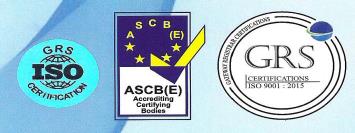PMS Rules on shipboard initial audit
For the initial audit for all vessels under Togo & PMS must to be
Ready to the following requirements:-
A- For carrying out ISM – (SMC) initial Audit .
Documents required to be ready during Audit Time .
1- The following points consider Major : –
a- Manuals according to the required including approvals to be ready ( manuals of the SMS including checklist record & SOPEP manual & SSP manual & STCW Manual & vessel risk assessment manual + Garbage management plan )
b- Attend DPA period the time of the initial audit
c- Interim audit reports issued by PMS including non conformities if there is.
d- Original Certificates to be ready on board and valid.
e- Vessel safety Certificates to be available on board and valid
f- Internal audit plan to be ready according to the company SMS Manual
g- Exercises operations records between company and vessels to be ready .
h- SMS filing record schedule, (copy required).
i- Shipboard safety management list for the office to be available and updating on board .
j- crew endorsements and Certificates of proficiency, required by STCW, for rating crew to be available on shipboard..
To learn more please click on the below;





